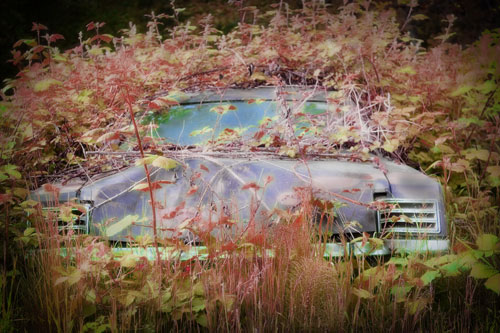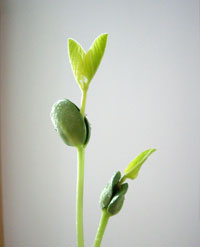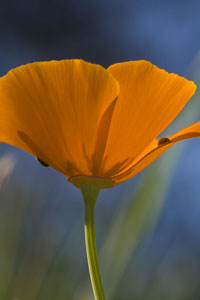By Arlene Mandell
The Slow, Inexorable Growth of a Writer’s Files
I was searching for the author of “Save yourself for that which is best” in my “Quotations” folder, thinking it would be a good quote for this piece. Instead, I came across the following one about trees, which doesn’t precisely fit the theme of “Writing Gardens,” but would be lovely for my poem about the redwoods in Yosemite National Park, which has had several different titles and which I hope to locate soon.
I feel the forest breathing and hear the slow,
inexorable growth of the wood.
—Guiseppe Penone, Italian artist
We word artists are passionate about inspiration and creativity, and the act of writing usually seems far more important than the chore of record keeping. Piles of paper cover our desks and proliferate in computer folders until we can’t locate either the name of the editor who wants a revision of an essay or the essay itself.
If we’ve been writing for a number of years, this happens all too frequently. There are roughly 1,300 finished pieces crammed in my file cabinets (and stored as computer files) and 20 more somewhere on my desk.
It occurred to me that writing could be compared to gardening. In the same way that I seek a balance between my enjoyment of my garden and the weeds and vines overrunning the yard, I’ve devised a strategy to rein in the proliferation of poems and essays—and that unfinished novel—cluttering my writing life.
Let’s begin with “seeds,” the growing supply of quotations, clippings, useful information, and ephemera that most writers amass. I’ve learned to sort these into colored folders with pockets—marked “Quotes,” “Sparks,” “Art,” and so forth. This helps somewhat. When a folder becomes too crammed to hold any more, I date it and start another.
 “Seedlings” are my early drafts, sometimes on sticky notes or the backs of bank deposit slips. Unlike actual seedlings in peat pots, which will wither and die without regular watering, these can survive for years, resting in a folder marked “New Work” that I visit with a sense of nostalgia now and then. When I decide a spindly attempt is unlikely to thrive—an essay about macadamia nuts, for example—I toss it, knowing there are hardier sprouts more worthy of my attention.
“Seedlings” are my early drafts, sometimes on sticky notes or the backs of bank deposit slips. Unlike actual seedlings in peat pots, which will wither and die without regular watering, these can survive for years, resting in a folder marked “New Work” that I visit with a sense of nostalgia now and then. When I decide a spindly attempt is unlikely to thrive—an essay about macadamia nuts, for example—I toss it, knowing there are hardier sprouts more worthy of my attention.
One of my personal challenges is “tangled vines,” multiple versions of the same piece with slight variations and sometimes with different titles. These are twined through my computer files, so a poem about my boyfriend, Joey, may also be logged as an essay titled “First Kiss.” (No scandal here. We were six years old.) Once in a great while, I’ll scroll through a section of files and delete some overlapping material. Other times I’ll rename the files so there’s Joey 1, Joey 2, and so on.
“Deadwood” is my shorthand for something I wrote ten years ago and haven’t looked at since. Actual deadwood is quite dangerous in our high-fire-alert zone in Santa Rosa, California, adjoining 500-acre Annadel State Park, and it must be removed. It’s a lesser concern in my computer files, but I might find a living sprout growing from the base (as they do from dead redwood trees) and transplant it . . . or just hit “delete” and feel virtuous.
 Journals are a more complex matter. Lucy Calkins, director of the writing program at Columbia University’s Teachers College, says that journal keeping isn’t writing but the “seeds of writing.” If that’s the case, then what should be done with the many journals stuffed in bookshelves and the one hidden under flannel pajamas in a bottom drawer?
Journals are a more complex matter. Lucy Calkins, director of the writing program at Columbia University’s Teachers College, says that journal keeping isn’t writing but the “seeds of writing.” If that’s the case, then what should be done with the many journals stuffed in bookshelves and the one hidden under flannel pajamas in a bottom drawer?
The vivid California poppies I once seeded in the meadow have now taken over the path. It’s illegal to destroy the poppies, the official state wildflower, and it should be illegal to destroy one’s journals. Within them are the roots of who we are, who we were, and what we’ve thought about over the years. If we’ve added photos, maps, theater tickets, and the occasional feather or pressed leaf, they can be an endless supply of intensely personal and original material.
A dear friend and passionate journal keeper recently spent an entire day gathering her diaries from various nooks and shelves in her home. Some were on specific topics, like her year as a teacher in China. Others were on motherhood. Still others focused on creativity.
She lined them up chronologically (though some were undated) and vowed to switch to using one journal at a time, since she tends to grab whichever is handy when she needs to record something. When she has a few moments, she sometimes opens one at random to read a passage, which she may then use to jump-start freewriting or as an example for the teachers’ manual she’s working on.
There’s really no one-fits-all set of guidelines for nurturing our writing files. Each of us needs to tend our garden as best we can, planting bulbs, cutting back wild roses, but conversely, also permitting a certain randomness, like the tiny purple violets that appear on the path between slate stepping stones after a cold and rainy winter.
Art Information
- "Rusty Abandoned Green" © Mat Hayward; stock image
- "Soybeans" © Rikahi; stock image
- "California Poppy" © Mike Baird; Creative Commons license
 Arlene L. Mandell, a retired English professor, was formerly a writer and editor at Good Housekeeping magazine. She has published more than 400 poems, essays, and short stories in newspapers and literary journals, including the New York Times, Wild Violet, and Women’s Voices. Her latest venture is a free e-chapbook, Scenes from My Life on Hemlock Street: A Brooklyn Memoir, set in the 1940s and '50s.
Arlene L. Mandell, a retired English professor, was formerly a writer and editor at Good Housekeeping magazine. She has published more than 400 poems, essays, and short stories in newspapers and literary journals, including the New York Times, Wild Violet, and Women’s Voices. Her latest venture is a free e-chapbook, Scenes from My Life on Hemlock Street: A Brooklyn Memoir, set in the 1940s and '50s.
This summer, when not tending her eccentric garden, Arlene plans to visit Toronto, sail through the Great Lakes, and take a cultural tour of Chicago.
